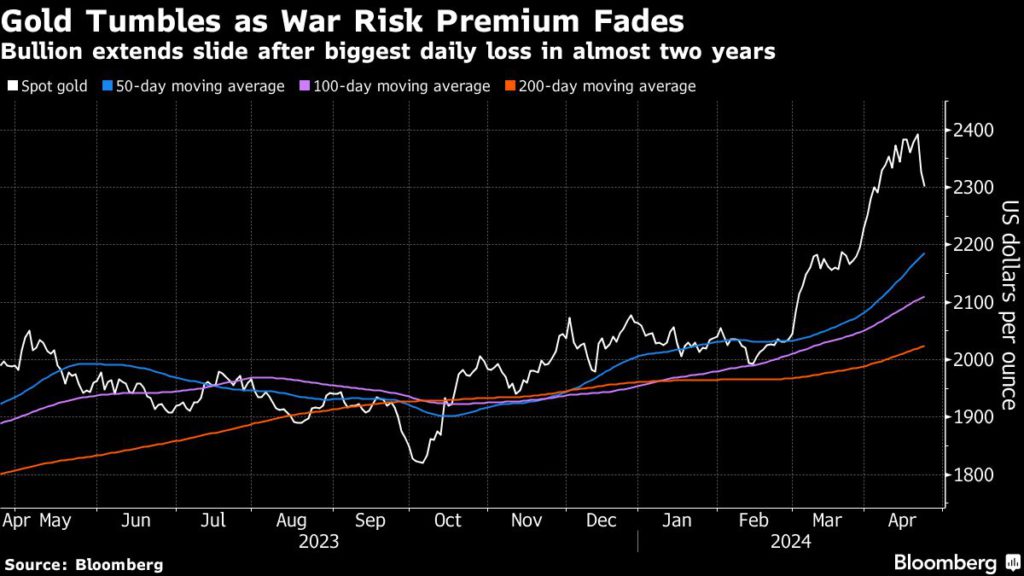Gold price falls again after biggest daily slump in almost two years

Gold pared losses after weaker-than-expected US business activity data helped underpin the case for Federal Reserve rate cuts this year.
US business activity expanded in April at the slowest pace this year on a pullback in demand that led to the first employment decline since 2020. The S&P Global flash April composite index of output at manufacturers and service providers showed the first contraction in six months. The weaker report underpins the case for rate cuts, which would support non-interest bearing gold.
Bond yields and the dollar pushed lower after the print, briefly lifting bullion higher before giving up the gains. Earlier Tuesday, gold fell as much as 1.5% to below $2,300 amid easing war risks in the Middle East.

“There is likely to have been some tactical short-selling, given the recent surge in gold prices,” Richard Grace, a senior currency analyst and international economist at ITC Markets, said in a note.
Traders are now turning their attention to US economic data due this week, including the Fed’s preferred measure of inflation, which may give more clues on the path for monetary policy.
Bullion is still up about 16% since the middle of February, with gains supported by geopolitical risks, central bank buying and demand from Chinese consumers. The precious metal has risen despite advances in the dollar and Treasury yields on signs the Fed may delay its much-anticipated pivot.
Spot gold dropped 0.5% to $ 2,316.75 an ounce as of 11:07 a.m. in New York. The Bloomberg Dollar Spot Index was down 0.3%. Silver and platinum fell, while palladium gained.
(By Yvonne Yue Li)
Read More: China is front and center of gold’s record-breaking rally
{{ commodity.name }}
{{ post.title }}
{{ post.date }}

Comments